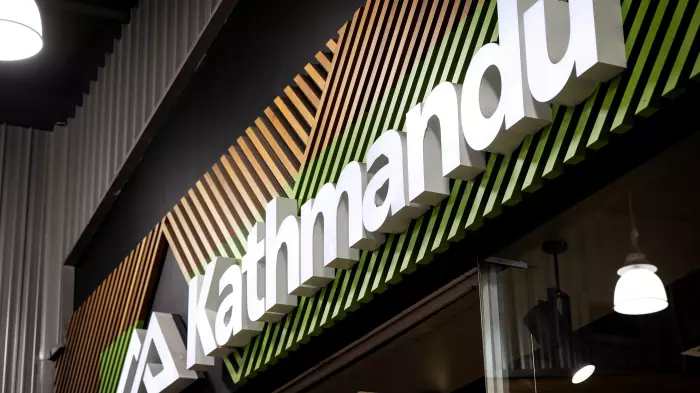Investing for retirement needs to be a long-term activity.
Running out of money in retirement could be one consequence of a lack of a long-term investment strategy, New Zealand investors have been warned.
Philip Morgan Rees, Head of Private Wealth at the New Zealand-owned investment specialist firm, Milford, says he worries that many people, unaccustomed to volatility in investment markets, panic and sell after a market fall.
“That is the worst time to sell. Kneejerk reactions like that can be costly and potentially damage an investor’s wealth,” he says. “Investing for retirement has to be a long-term activity.”
He says those not yet retired are in the accumulation phase of life, investing for a timeframe to somewhere around age 65 while those already in retirement are likely investing for a period of anywhere between 20-30 years.
“Sixty-five is not so old these days, and someone turning 65 this year can, on average, expect to live to around 87, so the vast majority of people will have to have a plan and think how they will live in retirement, potentially for a long time.
“Yet many struggle to see beyond a year or two when it comes to investing. Why is it so hard? It is harder without professional advice, but it is also hard because if people look for greater gain in the long run, the trade-off is they have to manage greater volatility in the short run.”
Morgan Rees says the last five years has been a salient lesson in long-term investing and the need to avoid kneejerk responses.
“During 2021 with interest rates at their lowest since 2015, term deposit investors flocked to investment markets buoyed by their strong performance. Conversely, in 2023 with a difficult 2022 under their belt, many sought the stability of term deposits. But the two are quite different.
“A term deposit offers a predictable return over a fixed period linked to cash rates which, over time, are lower than can be achieved with a portfolio of shares and bonds.
“One problem with term deposits and lower predictable returns is inflation. We’ve not had to worry about it too much, until now, but therein lies the first lesson in investing: All investing involves trade-offs.
“I could put my money into term deposits for a predictable (if lower) return but the trade-off is the erosion of purchasing power due to inflation, which in retirement could mean running out of money.”
As an alternative, Morgan Rees says money in an investment strategy containing shares and bonds can lead to higher returns, but the trade-off or price to pay is volatility – “and by volatility, I mean prices going down as I’ve not met an investor who minds too much about prices going up.
“Is Inflation the enemy? Well, it represents how quickly assets or investments lose their real value, how quickly prices are rising and how much of a return an investment needs to make to maintain a specific standard of living. Returns must be at least as high as inflation to stand still so if you are receiving 5 per cent and the rate of inflation is 4 per cent then in real terms you are receiving 1 per cent.”
Morgan Rees says for many years inflation has rarely been a bother. Between 2016-2019, the rate was less than 1 per cent for 2016, and less than 2 per cent for the next three years with the cumulative impact of 6.7 per cent.
But, looking at subsequent years, there is a different story: 3.94 per cent in 2021, over 7 per cent in 2022 and almost 4.7 per cent in 2023. Between the first quarter of 2020 and the first quarter of 2024, the erosion of purchasing power was over 16 per cent.
“Inflation is coming down again but still appears to be stubborn and may remain higher for longer,” he says. “So, the question is for how much longer and does it need to be factored in to a greater degree and have we become a bit complacent about inflation?
“Compared with term deposits, a balanced portfolio has a lot more ups and down along the way to achieve the higher returns and so an investor must be mentally prepared to accept these in order to achieve the more beneficial outcome and avoid knee-jerk reactions.”
Morgan Rees says moving in and out of balanced portfolios and term deposits is not a strategy and is a classic knee-jerk reaction. The way they behave over the short term is quite different and the way they are compared is flawed.
“The only way to compare them is over the long term. Take, for example, a case from a year ago - the way comparison which was being made was by taking a backward-looking 12-month performance for a balanced portfolio of -0.41 per cent against a forward-looking return for a term deposit of 5.7 per cent.
“I would have been making a judgement on what I will receive against what I had received during a difficult period in markets,” he says. “Roll forward a year and the balanced portfolio returned 12.12 per cent and the term deposit 5.70 per cent.
“It’s not about the benefit of hindsight, it’s about the benefit of a long-term plan and understanding the trade-off of volatility. Setting up a sound strategy and managing it through periods of volatility is the better way to grow wealth.”
Get started with your investing journey at Milfordasset.com
This article does not take into account your investment needs or personal circumstances. It is not intended to be viewed as investment of financial advice. Past performance is not a reliable indicator of future performance. Investment involves risks and returns can be negative as well as positive. Milford Funds Limited is the issuer of the Milford KiwiSaver Plan and Milford Investment Funds. Please read the relevant Milford Product Disclosure Statement at milfordasset.com. Before investing you may wish to seek financial advice. The Disclosure Statements for all Milford Financial Advisers contain more information and are available on request, free of charge. See our Financial Advice Provider Disclosure Statement at milfordasset.com/getting-advice.






